#traditional witch
Text
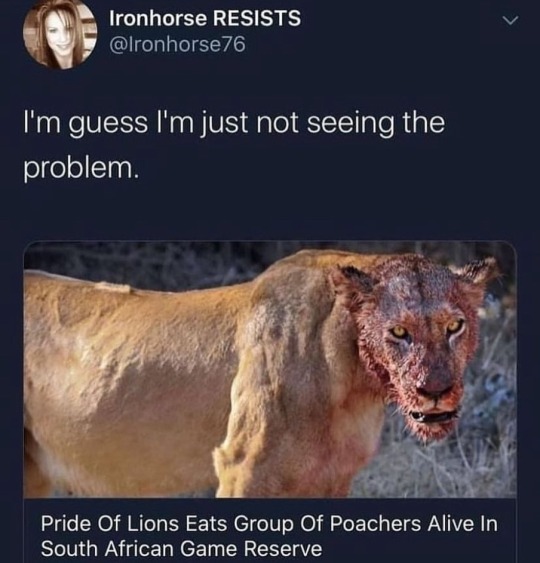
“The only body part we found was one skull and one bit of pelvis, everything else was completely gone," said the park owner.
#witchcraft#witch#witches#traditional witch#traditional witchcraft#magick#occult#tradcraft#witchblr#witchy vibes#spirituality#gothcore#goth aesthetic#goth
158 notes
·
View notes
Text
for my fellow witches who practice christian folk magic and use the rosary, I've written a special set of prayers for Palestine. Feel free to use and distribute this if you wish.

#witch#witchcraft#witchy#witchblr#traditional witches#traditional witch#traditional witchcraft#folk witch#folk witchcraft#folk practice#folk practitioner#christian folk witchcraft#christian folk practitioner#catholic folk magic#catholic folk witchcraft#catholic folk practitioner#prayer beads#rosary#rosary prayers#folk christianity#palestine#gaza#israel
34 notes
·
View notes
Text
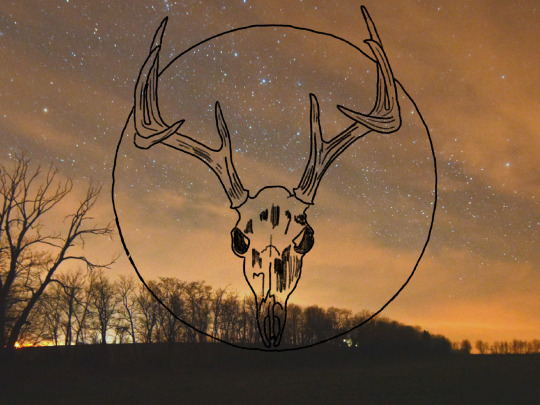
Like the Witch Father, the Witch Mother is the dual-natured Archetypal Divine Feminine. She is life and death, creation and destruction, She is all. In Traditional Witchcraft, She is an initiator into witchcraft and the being that creates and molds the world to Her whim. The Witch Mother is essentially Witchcraft itself.
In the same way it is hard to define and pinpoint the Witch Father, the Witch Mother is another enigmatic spirit essential to Traditional Witchcraft. Across cultures and centuries, She has been known by many names. Diana, Herodias, Frau Holle, Baba Yaga, Sa Rejusta, the Queen of Elphame, and Nicnevin are some of the names that She has gone by.
As it stands, the Witch Mother is the Mother of all Witches. From her, we begin to learn the ways of the Crooked Path. Usually, it is by chance encounter that we meet Her, or one of Her emissaries, and we are put through trials. Through these trials, however, comes the enlightenment of the Path and we find our Witch Fire lit. With Her blessings, we are granted access to the unseen.
The Witch Mother is a Dark Feminine Great Spirit. She is the primordial womb from which all life emanates. She forms the Earth to Her liking. The Witch Mother holds sway over life and death, the seasons, and even the turning of the day. She is the Magna Mater. She fiercely protects Her children and gives us the knowledge and tools that we need in order to defend ourselves from those wishing us harm.
Her lore can be dark and sometimes violent. But it’s necessary as a protectress for Her family. When we prove ourselves to Her, She becomes a Great Ally for us in our paths.
Baba Yaga
In Vasilisa the Beautiful and Baba Yaga, we come to learn that Baba Yaga has mastery over the world. Through her servants, the days and nights turn over. In the story of Natasha, Baba Yaga has a towel that can create rivers and a comb that can create forests. Baba Yaga occupies the archetype of Witch Mother as the initiator and creatrix of the world. She gives these girls tasks which at first glance seem impossible but by their wit and cunning natures, they overcome them. This leads to Baba Yaga fulfilling her promise and granting them the boon they came to her for. For Vasilisa, the fire she seeks also burns her stepmother and sisters to ashes leaving her free from their oppression and hatred.
Frau Holle or Mother Hulda
In the story of Mother Hulda, two step-sisters end up in the Otherworld and in service to Her. The first sister is hardworking while the other one is lazy. The hardworking sister drops her spindle into the well while trying to clean it and must figure out a way to get it out. She falls in and comes out in the Otherworld. She meets an apple tree asking for help to get its ripe fruit down from its branches and a loaf of bread asking to be taken from the fire before it burns. Naturally, she obliges. Coming to a house in the meadow, she meets Mother Hulda who asks her for help around the house. This sister is very hardworking and listens to all of Mother Hulda’s requests, including how to fluff her pillows so the feathers fall so it will snow on Earth. Accomplishing this and asking to return home, she is sent back with gold falling all about her to keep.
The second sister, being lazy and greedy jumps into the well and into the otherworld wanting her own gold. She marches past the apple tree and the bread not stopping to help them, and comes to meet Mother Hulda and agrees to work for her as well. She performs well on the first day and gives way to laziness in the coming days. When she asks to go home, expecting to be showered in gold, she is told to “get lost” and is instead showered in tar.
In this story, we see Her control over the weather and her home in the Otherworld. She has the power to bless and to curse. She expects those who want to learn witchcraft and the occult arts to hold up their end of the bargain. She grants power to those who are willing to work for it.
Queen of Elfame
In several witch trials in Scotland, we see the Queen of Elfame make an appearance. In the trial of Bessie Dunlop (1576), she confesses that she has traveled to the Otherworld and has communed with the Queen of Elfame several times. For her kindness when in the guise of an old woman, Bessie is granted a familiar who teaches her natural remedies, knowledge of where to find lost items, and information about prophecies.
Several years later, in 1588, Alison Pearson (also styled as Alesoun Peirsoun) was burned at the stake for communing with the Queen. In Elfame, she learned of medicinal herbs, healing arts, and how to make charms and potions which she sold.
In 1597, Andro (Andrew) Man confesses that he has lain with the Queen of Elphen and they begot many children together. He further confessed that through her, he would become knowledgeable in all things, help and cure all sicknesses except death. In his confession, Andro Man goes on to explain that “the Queen of Elphen has a grip of all the craft, but Christsonday (the Devil) is the husband and has all power under God.” They also have spirits in their company that are known to Man.
Aradia: or the Gospel of Witches
In Aradia, it is attested that Diana is the Mother of Witches. She teaches her daughter, Aradia, witchcraft and charges her to go to Earth to teach humans this art. Specifically, Aradia is sent to teach the poor and the slaves witchcraft in order to free themselves from their lot in life.
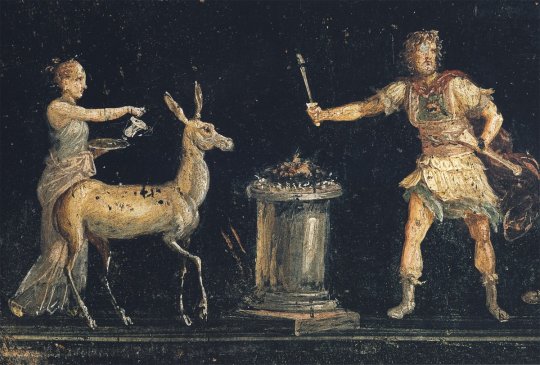
#witch mother#witch fire#witchblr#witch#witchcraft#traditional witch#traditional witchcraft#aradia#diana#witch trials#queen of elfame#baba yaga
81 notes
·
View notes
Text
Motivated by a mutual, here’s an ask game!
1 What do you practice?
2 Does a particular faith inform your craft, or alternatively, if your faith and magic are separate- why is this distinction between the two important to you?
3 What paradigm or philosophy do you adhere to?
4 What culture(s) is your magic rooted in?
5 For my dual faith folks, do you practice a historically attested syncretism or one of your own creation?
6 How easy or difficult has it been for you to hold to a dual faith observance?
7 What are some of your favorite tools?
8 What are some of your favorite books, or books you would recommend to a novice?
9 What’s something you wish more people understood about the craft?
10 What’s something you’re tired of explaining to people?
11 How would you define witchcraft?
12 Your favorite things about the occult community? Whether it’s your local community, if you’re lucky enough to have one, an online community or whatever!
13 Least favorite things about the community?
14 Go to herbal allies?
15 What’s something you feel is often overlooked?
16 Books in general you recommend or are interested in?
17 go to animal allies?
18 go to mineral allies?
19 most unorthodox thing you’ve utilized in magic?
20 what’s something you’re currently interested in and/or learning about?
#traditional witchcraft#magic#tradcraft#occult#folk magic#magick#witch#witchcraft#folklore#traditional craft#witches#traditional witches#traditional witch#animism#animist#occultism#occultist#asks#ask#ask game#witchy asks#witchcraft asks#bring back ask culture#bring back asks culture
44 notes
·
View notes
Text
Who is the bruja?
About Brujería and Curanderismo in Latin America, and witchcraft from a latine perspective.
You’ll most likely see the term Bruja used in anglophone communities to refer to latine magic practitioners. By that definition, any latin american person who does some kind of magic is, in a way, a bruja/brujo/bruje. This use of the word comes from a place of reclamation of said latine heritage and of our cultural folk magic practices, particularly for hispanic latines. Similarly, you’ll see portuguese-speaking latines using the word bruxa, or bruxaria.
I can hear you already: But I am a spanish-speaking european! I am also a bruja!... given the context, you’re a witch, not a bruja. Brujería in the broader sense of the word, as is used in any conversation in spanish, can be translated to witchcraft. “Brujería” in the specific “latine magic practitioner” sense doesn’t have an english translation, and thus we keep the word in spanish, to signify that cultural tie to hispanic latin america. So no, in the context of an anglophone discussion of brujería, you’re not a bruja, in the same way that, while speaking a languange derived from latin, europeans are not latino/latine because they’re not from latin america.
That is, considering the modern use of the word, specially in online spaces. But if you speak to your Elders, you’ll hear something a little different...
People like to ask themselves “am I a born witch?”, and well, traditionally, a bruja is made, not born, and it specifically implies baneful work.
Old school folks will tell you that not just anyone who practices magic is a bruja, in fact, calling a Faith Healer a “Bruja”, could be taken as a major offense.
Many elders will make a distinction between dual roles of what we’ll call the Healer, and the Witch, for convenience’s sakes, since the words for naming either vary in each languange and culture. One of the better known examples I can give you is how in spanish, and across latin america, you’ll hear the duality between the Curandera and the Bruja.
The Curandera Heals, the Bruja Bewitches.
While the Healer is born, with a set of gifts or dones that are necessary to fulfill a role assigned at birth (or even before so), to serve their community. A Witch is made, by their own choice, in a personal quest for power and knowledge, and thus doesn’t act in favor of their community necessarily, instead, acts seeking their own benefit first, sometimes... in detriment of the community.
There’s nothing wrong with keeping our best interests in mind! In fact, a true Healer is taught to balance left hand and right hand work, one who cannot harm cannot heal, and I always say we must understand the wound and how it was made before we can understand it’s cures, but precisely because of that, the figure of the Witch stands out more. A Healer can do both, heal and harm. While the Witch... not necessarily. A Witch is, oftentimes, only capable to manipulate circumstances (and people) but not heal, and even when good intentioned, it can bring negative repercussions. That is why it has such a negative connotation traditionally, and why most of the older folks, or anyone trained by them, will likely avoid the term.
Note how I’ve been saying Healer or Gifted person instead of Curandera. Because having a don does not by itself make someone a curandera. Since I’ve seen more and more people using the term online, here’s a reminder that being a curandera is not a choice and does not refer to just anyone who practices herbal healing or any other healing modalities, it is a responsibility to the community you’re in. Nobody is born a priest or babalawo, and similarly nobody is born a curandera, while they could be gifted from birth, each curanderismo lineage will have their own initiations and traditions to train that person and turn them into a true curandero, and only then, the community will give the title to them, after working for years and earning their respect and love. The term curandera is only appropriate for someone who not only has a higher calling (vetted & confirmed by elders), but specifically someone who’s been properly trained and is already in service of their community.
With that in mind, bruja is definitely the right term for someone who’s just learning and is only doing magic for themselves or close friends and family.
But then... there’s some issue specifically with indigenous and afrolatine practices and descendants. During colonization, the church demonized our beliefs, called our Ancestral practices, Gods and Spirits “satan worship” and thus, our healers were called “brujas”. Hunted and killed specifically because indigenous culture & healing, aswell as african traditional practices, were targeted. That is, we were called “brujas” as part of a cultural genocide. Elders will often stay away from the term bruja not just because it doesn’t reflect their practice, but also because staying away from the words bruja and brujería was, and in some places stil is, simply a survival instinct. Choosing other words to identify, or even not speaking about it at all, along with the syncretism with christianity, were ways to survive that genocide, and pass on as much as possible in whispers and under catholic veils.
It is up to each practitioner to talk to their elders, learn their people’s history, and decide for themselves if they wish to reclaim the word, or if they’ll rather use more culturally-specific terms, or maybe both. I’ve known plenty of healers of many paths who’ll refer to themselves as brujas to outsiders, and will use more specific terms amongst kin (myself included).
While I respect (and support) the reappropriation of the terms bruja and brujería to refer to latine magic, I also believe it is important to know our history with these terms, and out of respect for our ancestors and the old traditions, also learn the proper names of things. Bruja may be a good way to identify for someone who’s just starting out in magic out of their own choice, who’s seeking community and doesn’t quite know their place in the bigger scheme of things, but also someone who, guided by proper elders and community, must dig deeper, and find their home. There’s specific names, even just in spanish, for different kinds of healers and workers. Are you an oracionista? huesera? yerbera? have you been trained in these practices? Only a skilled elder can identify if you possess any gifts, and teach you how to hone your own skills. And If you’re indigenous, you must take the time to reconnect to your indigenous community, to your own medicine, and learn the proper terms in your indigenous tongue.
My final thoughts: reclaiming brujería is important, but so is learning and respecting our culture & history. We have incredibly rich cultures, and reducing ourselves to just “brujas” is certainly an oversimplification, if not even an attempt from outsiders and appropriators to overgeneralize and commodify our cultural practices that we must fight against. We can appreciate brujería as an umbrella term for everything that unites us, and as a term to make understanding and communication between ourselves easier, while also acknowledging the history of the word, the huge diversity it covers nowadays and giving due respect to each of our corresponding cultures.
Thanks for reading!
#brujería#bruja#brujas of tumblr#witches of color#brujeria#santeria#santería#curanderismo#curandera#traditional witch#traditional witchcraft#folk magic#folk witch#folk witchcraft
319 notes
·
View notes
Text
Offerings for Lucifer

Fruit and anything made of fruit - especially apples, pomegranates or whatever your culture pictures as The Fruit. Strawberries for Venusian (Morningstar) associations, citrus for Solar. Cider, wine, juice, kompot, fruit teas. Cakes and other sweets made with fruit.
Strong spirits - often associated with the Devil.
Roses - Venusian. You can also give him rose water, alone or mixed with vodka.
Dandelions - for their chaotic, wild, untamed, unconquerable spirit.
Any plants associated with the Devil in your culture. Research your local lore and especially folk names to find them. Check their biological properties too - many of them can be poisonous so be careful.
Snake imagery - pictures, figurines, photos, any kind of arts and crafts. You can even make something yourself. As well imagery of goats and other animals associated with him.
Star imagery - especially Morningstar and falling stars.
Shed antlers - for Lucifer in his horned Devil of The Forest aspect.
Sunflower seeds - Solar.
Perfume or oils, especially of scents associated with him (apples etc.)
Your art of any kind dedicated to him.
Picrews of them - they enjoy it in my experience.
Queer symbols - Lucifer is a nonbinary shapeshifter.
Cakes, cookies and chocolate - just a delicious UPG.
(Made for Lucifer the Devil, offerings for the Roman Lucifer may vary.)
#czortposting#offerings#lucifer#luciferian#lucifer offerings#luciferianism#theistic luciferian#theistic luciferianism#luciferian witch#luciferian witchcraft#folkloric witch#folkloric witchcraft#traditional witch#traditional witchcraft#spirit work#demon work#deity work#the devil#witchfather#theistic satanism#satanic witchcraft#lucifer devotee#occult#occultism#left hand path
826 notes
·
View notes
Photo

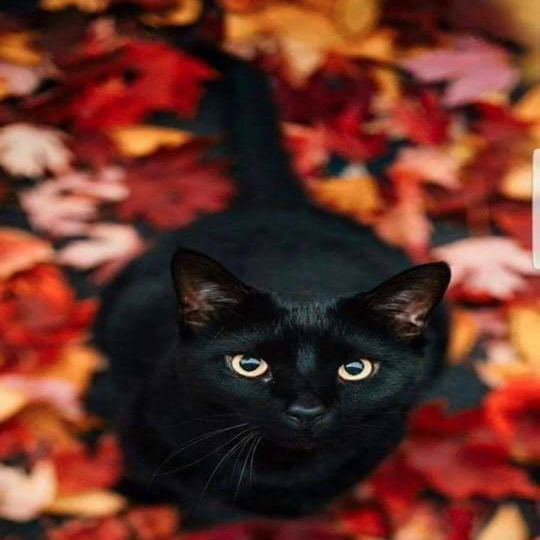




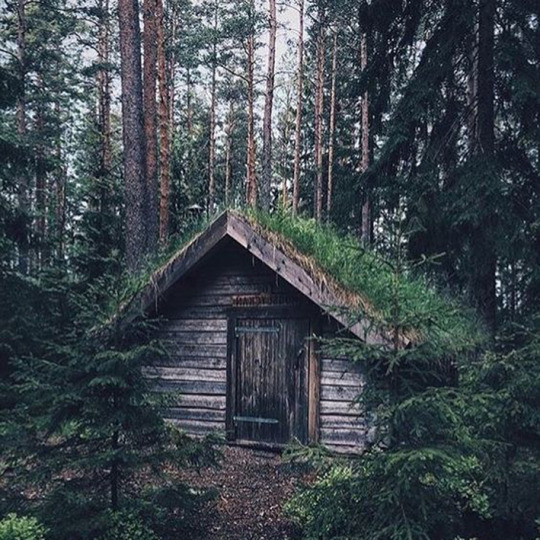
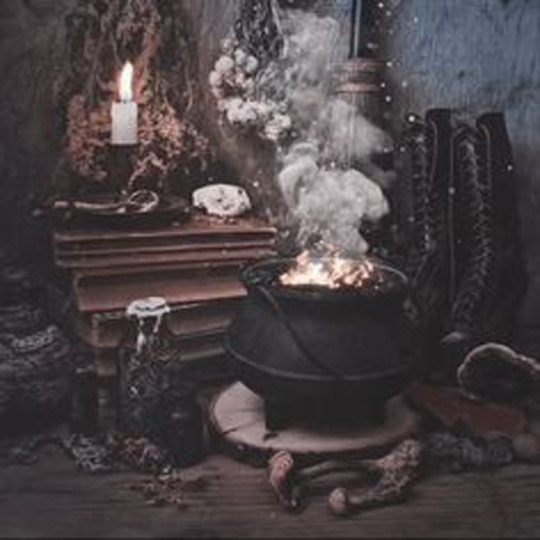

Witchtober 2022 week 3: Traditional witch
My ko fi
#traditional witch#witchtober2022#witchtober#witch aesthetics#witch#witchcraft#witchy#witchcore#witchblr
295 notes
·
View notes
Text
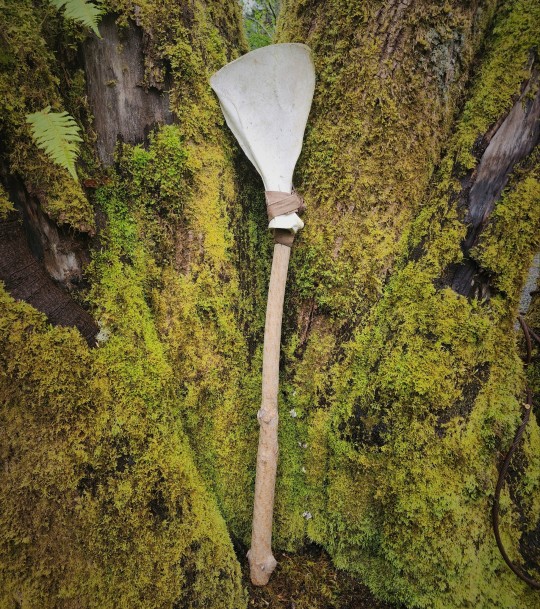
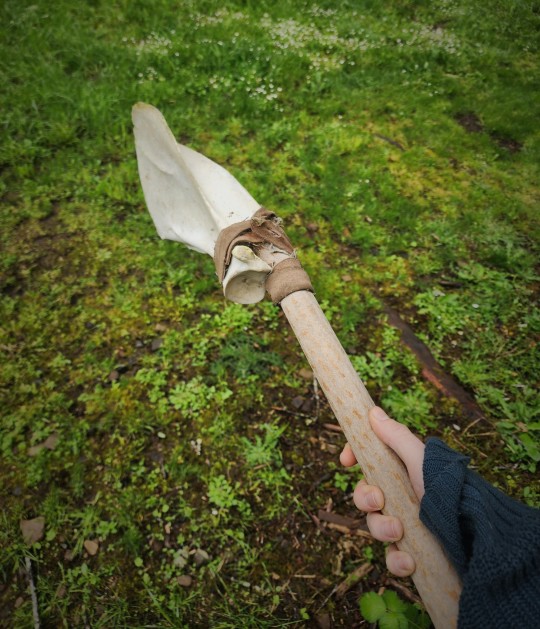
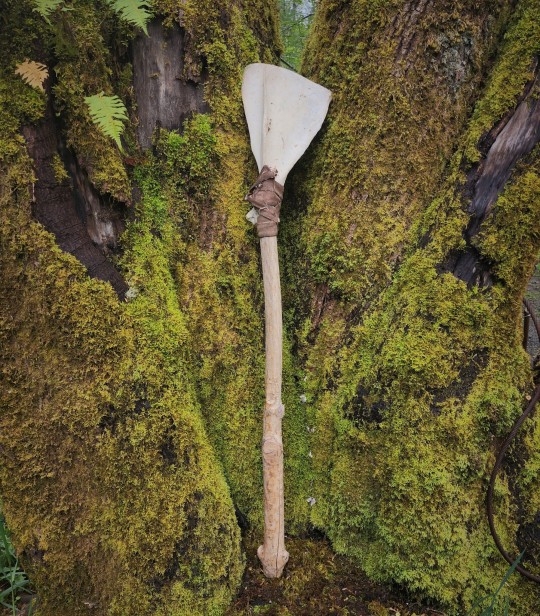
I was recently in the forest searching out some particular bones I need for a set of linked Sentry Fetishes, when I made an odd discovery.
No sooner had I found the bone I was looking for than I spotted this strange item buried beneath the leaf litter. It appears to have been fashioned some time ago, though I have no clue why, or by whom...
42 notes
·
View notes
Text
In other news... look at this beauty I got!


Copper and bronze, practically brand new, and bigger than I expected. Big enough to comfortably fit a little over 1,25 Lts. A very nice surprise considering that when I bought it I thought it'd fit half a liter, if I was lucky. And it didn't cost me an arm and a leg! I am jumping and squeaking.
It's been cleaned and cleansed, now it's time to bless it. There's a few ways to go about blessing containers like this in my tradition. If you own Land (or you trust whatever is up there watching over you enough to leave this precious baby in a public, but sacred, place) you can bury it with offerings within it addressed to the Land Spirits, and ask for their blessing directly. Pour some libations over it, give praise and return after a whole moon cycle. Or... if you're like me, and have specific dates to bury things, and specific dates to dig things up, use those!
Another way is to simply anoint it with oils, or perfumes, or both, crafted for such blessing purposes. Maybe some holy waters too. Or give it a good nice bath with flowers and resins...
Simply using it to make a small bonfire should also do the trick, if you place some dirt or sand from a sacred place within, make a little hole in the sand, then pour some alcohol and a blessing (I recommend floral, specially of white flowers) perfume, and (safely!) light it up. Pray over it. Sing over it. Indulge in a little pyromancy and try to scry in the flames how the tool will best serve you.
Do you all have any preferences as to how to bless a container or more specifically a cauldron? I'd love to hear them!
#My notes#Cauldron blessing#Witch tools#Cauldron#Witch cauldron#Witchblr#Folk witch#folk witchcraft#Traditional witchcraft#Traditional Witch
14 notes
·
View notes
Text
“As she spoke, vipers and toads fell from her open mouth.” – from “Diamonds and Toads (or, The Fairies)” (Illustration by Cory Thomas Hutcheson 2020)🐍🐸

#witch#witches#witchcraft#witch community#baby witch#witches of tumblr#traditional witch#folk magick tradition#traditional witchcraft#folk magic tradition#folklore#witch folk#folk magic#folk magick#folk witch#folk witchcraft#cunning folk#cunning folk of the crooked path
18 notes
·
View notes
Text



sum Sunday affs inspired by the love witch.
Middle image is a direct quote from the film 🥀
#theglamourempress#the love witch#love witch#glamour witch#glamour magic#affirmations#psa#witch affirmations#monstrous feminine#love magic#ishtar#venus#witchblr#satanic witch#traditional witch#hekate#hekatean#hekate devotee
18 notes
·
View notes
Quote
For the folk witch, however, encounters with the otherworld are a crucial source of knowledge, growth, and spiritual nourishment. There is something in the heart of the witch that craves ecstatic escape into the wild and dark. Whether through the use of alcohol, herbs, ritual, or charms, witches are possessed of a seeking nature that sends us tunneling into the hidden realms, and perhaps it is due to this innate yearning that we are able to see spirits of the otherworld as kindred beings.
Roger F. Horne, A Broom at Midnight: 13 Gates of Witchcraft by Spirit Flight
#spirit flight#otherworld#traditional witch#traditional witchcraft#folk witch#folk witchcraft#spirit world#spirit work#witchcraft#witches
81 notes
·
View notes
Text
Types of Witches 🧙🏽♀️🧹✨
Hello darlings 🥰
Today, let's talk about the different types of witches you might encounter in the world of witchcraft! While every witch is unique, there are certain labels that have emerged to describe specific practices and areas of focus.

Here are some of the most common types of witches:
🥐Kitchen Witch: This type of witch uses cooking and baking as a form of magic, infusing their food with intention and energy. They often have a deep connection to nature and use herbs and other natural ingredients in their cooking.
🦊Hedge Witch: Hedge witches are typically solitary practitioners who work closely with the natural world. They often have a special connection to animals and use divination and herbalism in their practice.
🌿Green Witch: Green witches focus on the natural world and use herbs, plants, and other natural materials in their spells and rituals. They often have a deep knowledge of botany and use their skills to heal both themselves and others.
🔮Eclectic Witch: An eclectic witch is someone who doesn't adhere to any specific tradition or path but instead takes inspiration from a variety of sources. They may use elements of multiple types of witchcraft in their practice.
🧹Traditional Witch: This type of witch follows a specific, established tradition or path. Examples include Wicca, Druidry, and Ceremonial Magic.
Remember, these are just a few examples of the many types of witches out there. Everyone's practice is unique and personal, so don't feel like you have to fit into a specific label. Embrace your own individuality and let your practice evolve as you do ✨
————
🌞 If you enjoy my posts, please consider donating to my energies 🌞
✨🔮 Request a Tarot Reading Here 🔮✨
————
With love, from a Sappy Witch 🔮💕
Blessed be. 🕊✨
#witchcraft#witches#witch#witchblr#types of witches#kitchenwitch#hedgewitch#greenwitch#solitarywitch#covenwitch#witchy#witchyvibes#traditional witch#witchythings#tarot witch#lunar witch#magick#pagan#pagan altar#paganlife#pagan wicca#paganblr#wicca#wiccapedia#occult#spirituality#mine#sappywitch#sappywitchcoven#blessed be
28 notes
·
View notes
Text

Pretty happy with my first attempts at reddening!
The stags skull took the pigment much better than the elk bone whip- nonetheless I’m JAZZED
I used red ochre, blood and wine
#traditional witchcraft#tradcraft#magick#occult#traditional craft#witch#witchcraft#traditional witch#The Devil#The Witches Devil#Folkloric Devil#Witchfather#reddening#bone reddening
31 notes
·
View notes
Text
Offerings for Stolas
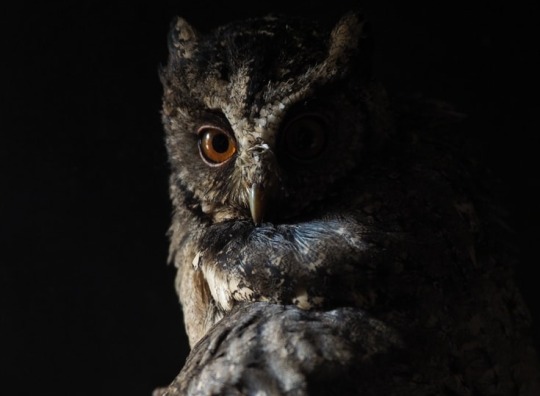
Plants - Stolas is demonic patron of herbal knowledge, and you can offer him plants in countless forms. Gather some and make him a bouquet. Burn herbal incense. Make him some herbal tea or even a flower crown, there are many options to explore. If offering poisonous plants, do it safely.
Stones - because he’s connected to knowledge of stones as well. You can offer him that cool rock you found outside, it doesn’t have to be a precious stone. If buying, pay attention to ethics though - stones are often mined with no regards for workers’ rights and the environment. Second hand is a nice option. You can give him stone jewelry, maybe even craft it yourself.
Space imagery - because he patrons astronomy and astrology. Space photos, art, jewelry, sky maps, symbols and models of the planets etc.
Corvid feathers and, if you’re lucky to find them, owl feathers. Obviously, only ethically acquired. Imagery of his bird forms - you can even make something yourself.
Various shiny little things - Stolas is not just connected to precious stones, he’s also a raven demon connected to the stars. You can give him many kinds of pretty shinies, they don’t have to be expensive at all. Just make the effort to think of him and to find him something nice.
You can also make photos of nature in your local environment and offer them to Stolas. Try to identify plant species you take pictures of and offer your learning time to him.
Donations - bird and general nature conservation, projects about providing free knowledge and learning opportunities (especially to disadvantaged people), and other things in Stolas’ domain.
Sweets - personal experience (UPG).
#czortposting#stolas#goetic demons#spirit work#demon work#offerings#luciferian#theistic luciferian#occult#occultism#left hand path#witchcraft#traditional witch#luciferian witch#witchblr#goetic spirits#ars goetia#goetia
355 notes
·
View notes
Text
“As you set out further into your journey deeper into our story remind yourself of the value of enchantment. Learning how to become enchanted is the beginning of learning how to enchant. But enchantment is frightening. Letting go of oneself enough to enter into a story that you don't fully as yet understand, to agree to work along its plot and come to its conclusions requires both bravery and subtlety but most of all it requires love. I have heard it said that subtlety and cunning are the gift of the Master, love and passion are the gift of the Lady and courage is the gift you give yourself as a representative of mankind and mankind's dignity.”
– A deed without a name, Lee Morgan.
23 notes
·
View notes